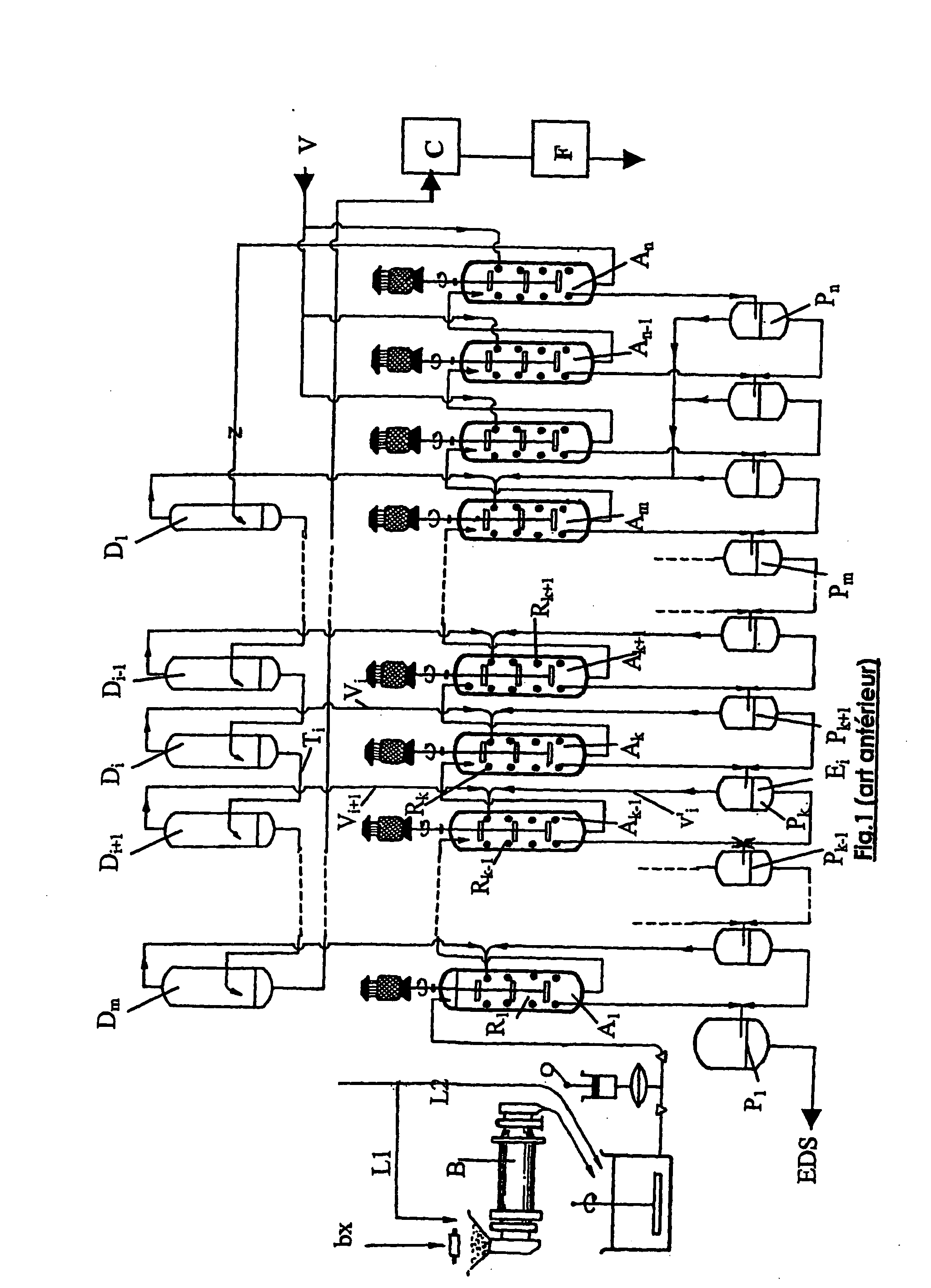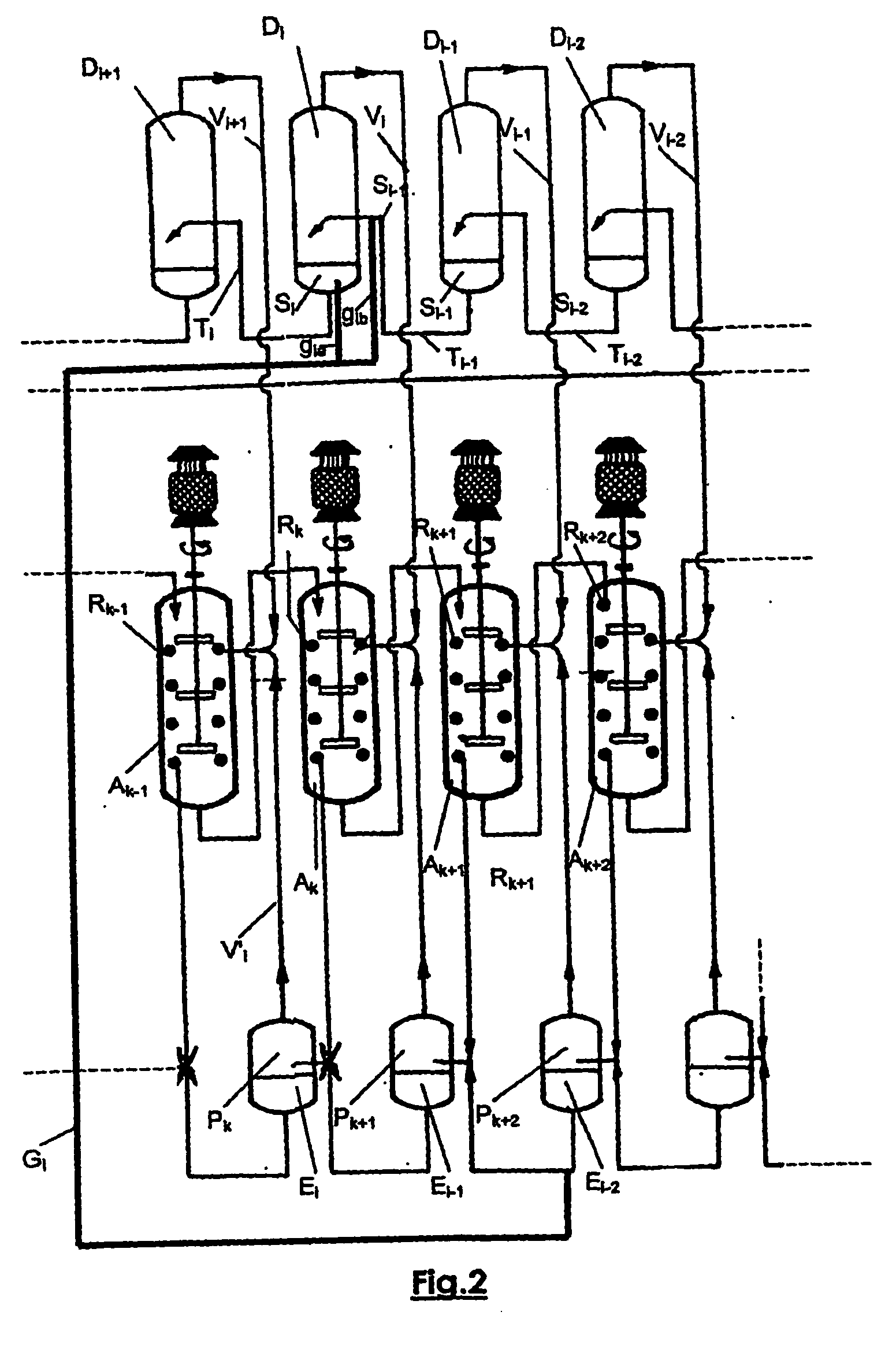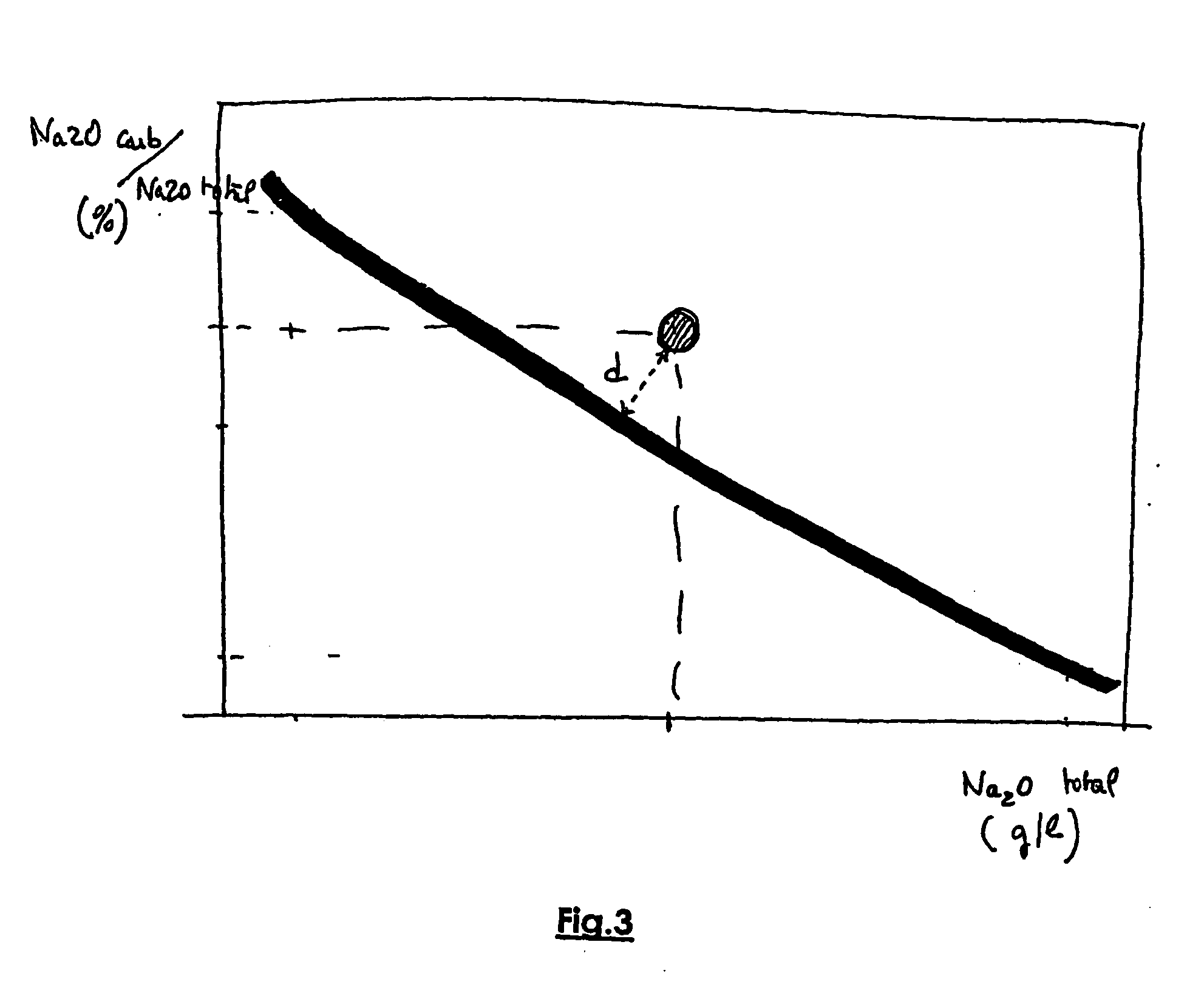Solubilisation of carbonates by recycling condensates during digestion of monohydrate bauxites under pressure
a technology of monohydrate bauxites and carbonates, which is applied in the preparation of alkali-metal aluminates/aluminium-oxide/aluminium-hydroxide, inorganic chemistry, etc., can solve the problems of reducing the productivity of bayer line installations, sodium carbonate can precipitate unexpectedly, and disturb the operation of installations, so as to reduce energy consumption and prevent extra energy losses , the effect of reducing energy consumption
- Summary
- Abstract
- Description
- Claims
- Application Information
AI Technical Summary
Benefits of technology
Problems solved by technology
Method used
Image
Examples
Embodiment Construction
(Global Installation Illustrated in FIG. 1 with n=19 and m=12; Use of Dilution according to the Invention with i=9 and k=4)
[0049] In this example, the diasporic bauxite to be treated is a Chinese bauxite containing 4.3% of calcium carbonates.
[0050] The continuous digestion workshop comprises 19 digesters and 12 flash tanks. The slurry output from the last digester is at 265° C. at 50 bars.
[0051] Without the bypass according to the invention, fast clogging of flash tank D9 occurs. The circuit tends to get blocked after a few days of operation at a point in the circuit at which the solution temperature is approximately 150° C.
[0052] If there is no dilution, the caustic concentration of slurry S8 at the inlet to flash tank D9, is 260 g / l expressed in total Na2O and the carbonate content expressed as (carb Na2O / total Na2O) is equal to 14%. The corresponding operating point is remote from the solubilisation curve in FIG. 3 and the distance d from this point to the solubilisation curve...
PUM
| Property | Measurement | Unit |
|---|---|---|
| Temperature | aaaaa | aaaaa |
| Percent by mass | aaaaa | aaaaa |
| Mass | aaaaa | aaaaa |
Abstract
Description
Claims
Application Information
 Login to View More
Login to View More - R&D
- Intellectual Property
- Life Sciences
- Materials
- Tech Scout
- Unparalleled Data Quality
- Higher Quality Content
- 60% Fewer Hallucinations
Browse by: Latest US Patents, China's latest patents, Technical Efficacy Thesaurus, Application Domain, Technology Topic, Popular Technical Reports.
© 2025 PatSnap. All rights reserved.Legal|Privacy policy|Modern Slavery Act Transparency Statement|Sitemap|About US| Contact US: help@patsnap.com



